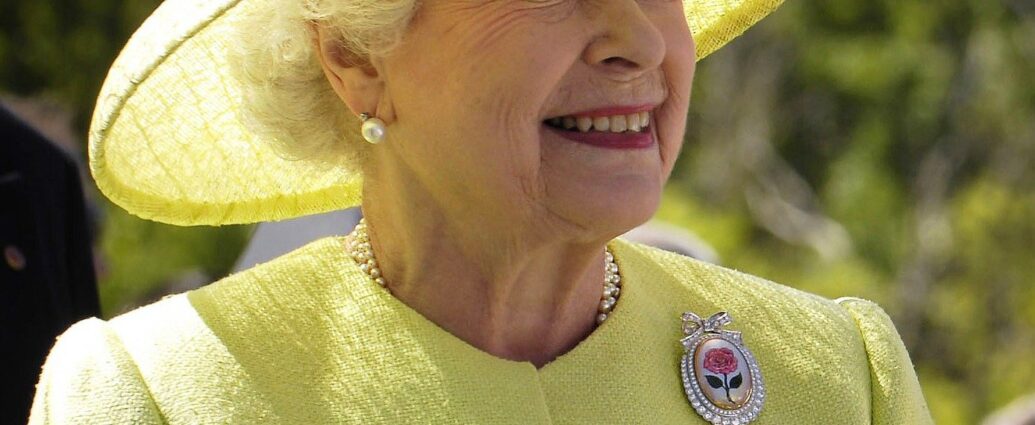Khushboo Malhotra
On 8th September 2022, Her Majesty the Queen passed away at Balmoral Castle with her immediate family by her side. After celebrating her Platinum Jubilee earlier this year, Queen Elizabeth II had the longest reign of any monarch in British history and has been a significant figurehead for generations.
Thursday marked the end of nearly a century of her rule as a monarch, and the United Kingdom is deeply mourning The Queen’s passing. Many British generations have never experienced a life without the Queen. It’s challenging to find the right words when a country is experiencing shared grief and a thousand different emotions, all hard to fathom.
As heir to the throne, Prince Charles assumed the title upon his mother’s death and has officially been crowned King Charles III.
“The death of my beloved mother, Her Majesty the Queen, is a moment of the greatest sadness for me and all members of my family,” The new King said in a written statement.“We mourn profoundly the passing of a cherished Sovereign and a much-loved mother. I know her loss will be deeply felt throughout the country, the Realms and the Commonwealth, and by countless people around the world.”
Even as a mourning son, the King will face a challenging round of public and constitutional duties. King Charles III is now the head of state, not just in the UK, but in 14 other Commonwealth realms. He will also become head of the 56-member Commonwealth, the British Armed Forces, the judiciary and the civil service. He is the Supreme Governor of the Church of England and is the Fount of Honour, which means all honours, such as knighthoods, will now be given in his name.
What happens now the Queen has died?

Under the plans for the Queen’s death, the day of the Queen’s death is known as D-Day, with each day that follows up to the Queen’s funeral known as D plus the number of days that have passed. But the announcement came late in the day—at around 6.30 pm on Thursday—meaning plans have been shifted a day to allow the complex arrangements to be put in place, meaning D+0 will be considered Friday.
The Royal Family will remain in mourning until seven days after the funeral. The nation will remain in mourning until the funeral of the Queen, which is expected to be on Monday, 19 September. Because the Queen died in Scotland, her coffin will lie at rest at St Giles’ Cathedral in Edinburgh. The public may be allowed to view the coffin after a few days.
They will then fly it to London, where hundreds of thousands of people will be allowed to file past over four days’ lying in state at Westminster Hall. Following the announcement, thousands of people began making their way to Buckingham Palace to pay their respects to the Queen. They are leaving floral condolences and personal tributes at the palace to mark her passing.
The first public address after the Queen’s passing
King Charles III held an audience with Prime Minister Liz Truss before giving his first televised address to the nation at 6pm as head of state following the death of his mother. King Charles III has promised a lifelong service to the country as he pays tribute to the Queen on her “last, great journey.”
‘Throughout her life, Her Majesty The Queen—my beloved Mother—was an inspiration and example to me and to all my family, and we owe her the most heartfelt debt any family can owe to their mother,” his majesty declared. “Queen Elizabeth was a life well lived; a promise with destiny kept, and she is mourned most deeply in her passing. That promise of lifelong service I renew to you all today.”
Towards the end of this historic speech, The King directed his last comments to his darling mother, looking visibly emotional. He stated:
“As you begin your last, great journey to join my dear late papa, I want simply to say this: Thank you. Thank you for your love and devotion to our family and to the family of nations you have served so diligently all these years. May ‘flights of Angels sing thee to thy rest.'”
The congregation within St Paul’s then burst into the hymn All My Hope on God is Founded as the pre-recorded speech came to a close.
King Charles also confirmed William and Kate will become the Prince and Princess of Wales. They take over the title vacated by him on his ascension to the throne following the Queen’s death. It reflects the shift in William’s position from third in the line of succession to heir apparent.
“Today, I am proud to create him Prince of Wales, Tywysog Cymru, the country whose title I have been so greatly privileged to bear during so much of my life and duty,” the King stated. “With Catherine beside him, our new Prince and Princess of Wales will, I know, continue to inspire and lead our national conversations, helping to bring the marginal to the centre ground where vital help can be given.”
Tribute by The Prince of Wales
The Prince of Wales has issued a moving tribute to Her Majesty the Queen: “She was by my side at my happiest moments. And she was by my side during the saddest days of my life. I knew this day would come, but it will be sometime before the reality of life without Grannie will truly feel real.”
— The Prince and Princess of Wales (@KensingtonRoyal) September 10, 2022
The events leading up to Queen Elizabeth II’s funeral
D+1–Saturday 10 September
As inews reported, the accession council will meet at 10 am at St James’s Palace to formally proclaim Charles as the new sovereign. The privy council gathers first without the King to proclaim him the new monarch and arrange business relating to the proclamation. The King then holds his first privy council, accompanied by Camilla, the Queen Consort, and William, who are also privy counsellors, and makes his personal declaration and oath. Proclamations are made in the City of London. Charles will hold an audience with the prime minister and the cabinet.
D+2–Sunday 11 September
Proclamations in the devolved nations are expected to be made simultaneously at noon in Edinburgh, Cardiff and Belfast. The Queen’s coffin is expected to be driven to the Palace of Holyroodhouse in Edinburgh, followed by a stop at a cathedral in the city, before being conveyed to London on the Royal Train.
D+3–Monday 12 September
A ceremonial procession is expected along the Royal Mile to St Giles’ Cathedral in Edinburgh. It is assumed there will be a motion of condolence at Westminster where The House of Commons and the House of Lords are expected to attend. The King will begin his visits over the coming days to Scotland, Wales and Northern Ireland as part of Operation Spring Tide.
D+4 –Tuesday 13 September
The Queen’s coffin is expected to be flown to London and to rest at Buckingham Palace. A rehearsal for the ceremonial procession will take place.
D+5–Wednesday 14 September
As monarch, Queen Elizabeth is automatically granted a publicly funded state funeral, and details will be released in the coming days. The Queen’s lying in state is expected to begin in Westminster Hall—Operation Marquee—following a ceremonial procession through London which will last four full days.
This will see the first big ceremonial in London as the Queen’s coffin is borne on a gun carriage from Buckingham Palace to Westminster Hall for her lying in state. A short service inside Westminster Hall is expected to be attended by members of the royal family. The lying in state begins, with hundreds of thousands of people expected to file past the coffin to pay their respects over the next five days. At some stage, senior members of the royal family are expected to stand guard around the coffin, the tradition known as the Vigil of the Princes.
D+6–Thursday 15 September
The Queen’s lying in state continues.
D+7 and D+8–Friday, 16 and Saturday, 17 September
The King continues with visits to the UK nations and meetings in London. The Queen’s lying in state continues and is expected to end on the morning of her funeral.
D+9 (Sunday 18 September)
Heads of state and members of foreign royal families to arrive in London.
Ahead of the funeral, European royalty, other esteemed guests and representatives of the 15 countries in which the Queen is head of state, plus the other 39 member countries of the Commonwealth, will start arriving in London.
D+10–Monday 19 September
The Queen’s state funeral is expected to take place at Westminster Abbey. Her coffin is expected to be transported on a gun carriage pulled by naval ratings from Westminster Hall to Westminster Abbey, with members of her family processing on foot behind. The service will be televised, and a national two minutes of silence held.
After the funeral, the coffin will be taken to Windsor Castle for a televised committal service. It will be lowered into the royal vault, and her final resting place will be the King George VI memorial chapel at St George’s Chapel, Windsor. A private burial interment service will be attended by senior members of the royal family.
Charles’ Coronation
Charles is expected to start a tour of the UK, visiting Scotland, Northern Ireland and Wales to meet his new subjects. His coronation is expected in the spring or summer months, after what is deemed an appropriate period of mourning for the Queen. He will also assume the Queen’s title of the monarch of Australia, and the role of appointing the governor-general and state governors on the advice of federal and state politicians.
Featured image courtesy of WikiImages from Pixabay. No changes were made to this image. Image license can be found here.


1 Comment